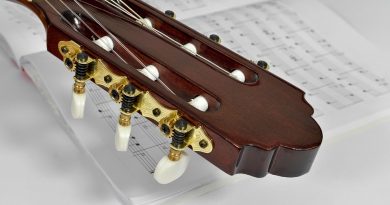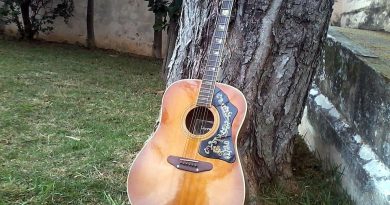Mastering Folk Chords: A Complete Guide to Guitar Chords
Mastering Folk Chords: A Complete Guide to Guitar Chords
Introduction:
Folk music has a rich history that spans across cultures and countries. One of the key elements of folk music is the use of simple yet captivating chord progressions on the guitar. In this guide, we will explore the basics of mastering folk chords on the guitar, covering essential chord shapes, common progressions, and tips for improving your skills as a folk guitarist.
Understanding Basic Chord Shapes:
Before delving into more complex folk chord progressions, it is essential to have a solid understanding of basic chord shapes. The most common chords used in folk music are major, minor, and seventh chords. Here are some essential chord shapes to get you started:
– Major Chords: The most basic major chord shape is the open E major chord, which uses the first, second, and third fingers on the second, third, and fourth strings, respectively. Other common major chords include A, D, and G, which can be played using similar finger positions.
– Minor Chords: Minor chords add a touch of melancholy to folk music. The open E minor chord is played by placing the second and third fingers on the second and third strings, respectively. Other common minor chords include A minor, D minor, and E minor.
– Seventh Chords: Seventh chords are frequently used in folk music to introduce tension and resolution. The open E7 chord is played by placing the first and second fingers on the first and third strings, respectively. Other common seventh chords include A7, D7, and G7.
Common Folk Chord Progressions:
Once you have mastered basic chord shapes, it is time to explore common folk chord progressions. These progressions serve as the foundation for many folk songs and can help you develop your musical vocabulary as a folk guitarist. Here are some popular folk chord progressions to practice:
– I-IV-V Progression: This classic folk progression involves the chords of the first, fourth, and fifth degrees of the major scale. In the key of G, for example, the I-IV-V progression would include the chords G, C, and D. Experiment with strumming patterns and fingerpicking techniques to create variations on this timeless progression.
– I-VI-IV-V Progression: Another common folk progression is the I-VI-IV-V progression, which adds a touch of complexity to your chord changes. In the key of C, this progression would include the chords C, Am, F, and G. Practice transitioning smoothly between these chords to enhance your folk guitar playing.
– I-IV-I-V Progression: This progression is a variation on the I-IV-V progression and is commonly used in folk music to create a sense of movement and resolution. In the key of D, for example, this progression would include the chords D, G, D, and A. Focus on maintaining a steady rhythm and exploring different voicings of these chords to add depth to your playing.
Tips for Improving Your Folk Guitar Skills:
In addition to mastering chord shapes and progressions, there are several tips you can follow to improve your folk guitar skills:
– Experiment with alternate tunings: Folk guitarists often use alternate tunings to create unique sounds and expand their musical palette. Try experimenting with open tunings like DADGAD or DADF#AD to discover new chord voicings and harmonies.
– Listen to folk music: Immersing yourself in the rich tradition of folk music can inspire new ideas and techniques for your playing. Listen to a variety of folk artists and pay attention to their chord progressions, melodies, and arrangements.
– Practice regularly: Consistent practice is essential for mastering folk chords on the guitar. Set aside dedicated time each day to work on chord changes, strumming patterns, and fingerpicking techniques. Gradually increase the tempo and complexity of your practice sessions to challenge yourself and improve your skills.
Conclusion:
Mastering folk chords on the guitar is a rewarding journey that can enhance your musical creativity and expression. By understanding basic chord shapes, practicing common folk chord progressions, and following tips for improvement, you can become a proficient folk guitarist. Keep exploring new ideas, pushing your boundaries, and immersing yourself in the world of folk music to unlock your full potential as a musician.






